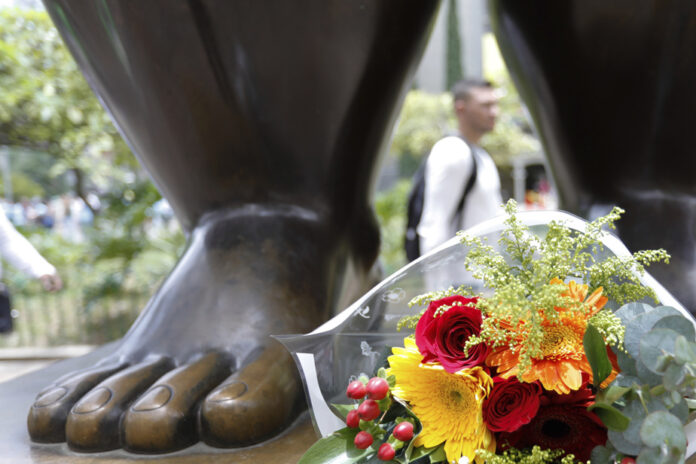(Bogotá) The remains of Colombian painter and sculptor Fernando Botero, who died on Friday, will be exhibited in Colombia for a last tribute in his country to the man considered one of the greatest artists of the 20th century, before his funeral in Italy, his family announced Monday.
“We will take my father to Colombia for a last goodbye, first to Bogota, then to Medellín,” his hometown in the northwest of the country, Juan Carlos Botero, one of his sons, told a radio Colombian.
Quoted by local media, the family assured that the artist’s remains would be in the capital on Thursday and that they would then be transferred to Medellín, where several events will be organized in memory of the most famous Colombian painter and sculptor in the world. .
Fernando Botero died on Friday in Monaco following pneumonia. According to his son, the artist, famous for his voluptuous characters, had expressed the wish that his body be taken temporarily to his country after his death.
“We are doing everything we must to carry out his last wishes […] He wanted to say goodbye to his people […] he lived grateful to the Colombian people,” explained Juan Carlos Botero.
“He never asked for a tribute,” but “it is understandable that people want to say goodbye to him and he wanted to say goodbye to his people,” added Juan Carlos Botero.
Botero donated dozens of his works to his hometown, where they are exhibited in museums, but also in parks and on public roads. Medellín declared seven days of mourning, with various tributes and demonstrations, upon the announcement of the master’s death.
After the wake in Colombia, the artist’s body will be cremated and his ashes will be buried in the small Italian town of Pietrasanta, where he resided and where his wife, the Greek artist Sophia Vari, who died last May, is there. -even buried.
Along with Nobel Prize winner Gabriel Garcia Marquez, Botero was one of the most famous Colombians in the world. His creations have been exhibited around the world, reaching several million dollars at auctions in New York and London.
According to his daughter Lina Botero, he continued to paint with watercolors until his last days, but “not with oils, because he had difficulty standing.”















